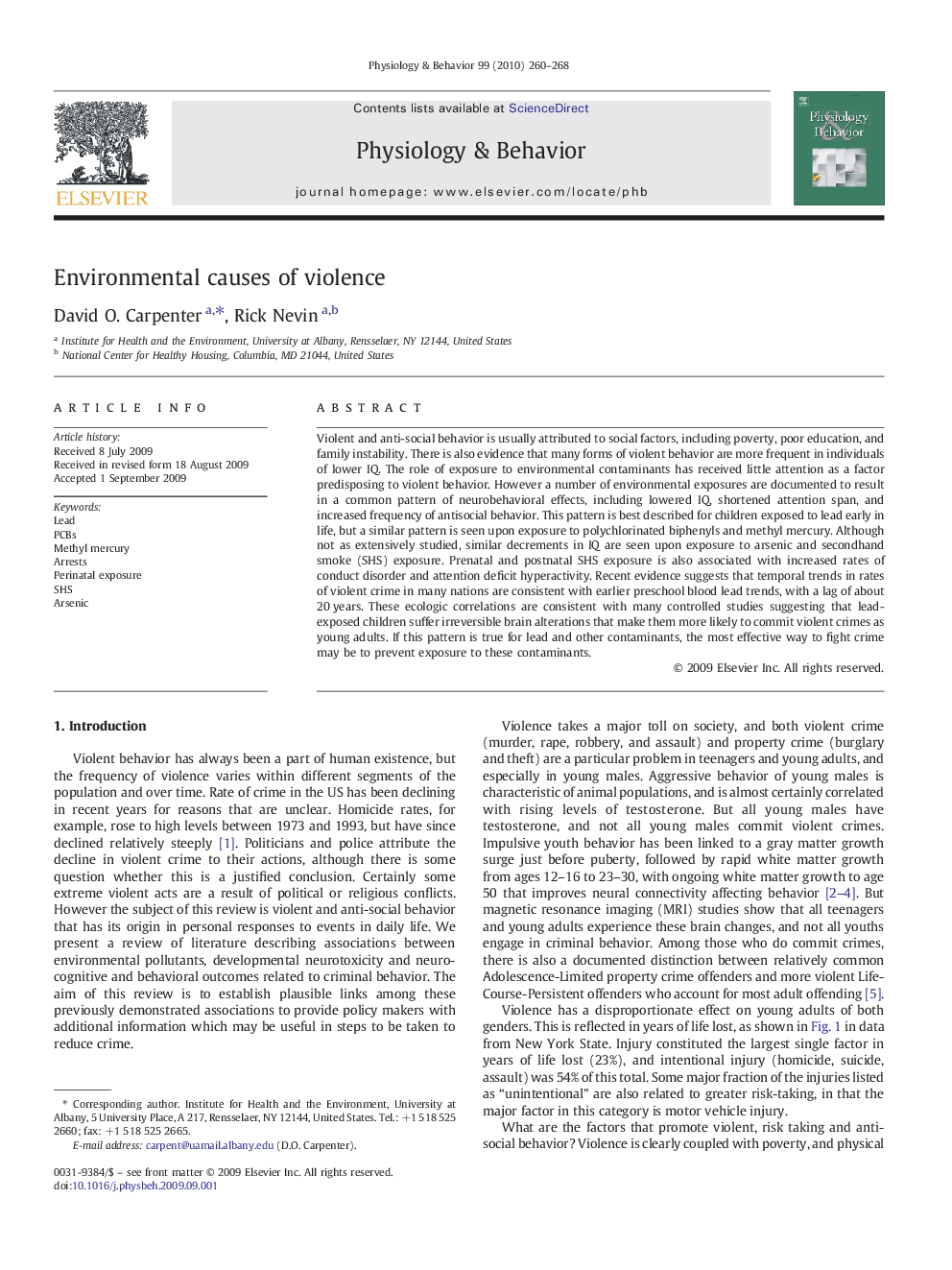| کد مقاله | کد نشریه | سال انتشار | مقاله انگلیسی | نسخه تمام متن |
|---|---|---|---|---|
| 2845045 | 1166375 | 2010 | 9 صفحه PDF | دانلود رایگان |

Violent and anti-social behavior is usually attributed to social factors, including poverty, poor education, and family instability. There is also evidence that many forms of violent behavior are more frequent in individuals of lower IQ. The role of exposure to environmental contaminants has received little attention as a factor predisposing to violent behavior. However a number of environmental exposures are documented to result in a common pattern of neurobehavioral effects, including lowered IQ, shortened attention span, and increased frequency of antisocial behavior. This pattern is best described for children exposed to lead early in life, but a similar pattern is seen upon exposure to polychlorinated biphenyls and methyl mercury. Although not as extensively studied, similar decrements in IQ are seen upon exposure to arsenic and secondhand smoke (SHS) exposure. Prenatal and postnatal SHS exposure is also associated with increased rates of conduct disorder and attention deficit hyperactivity. Recent evidence suggests that temporal trends in rates of violent crime in many nations are consistent with earlier preschool blood lead trends, with a lag of about 20 years. These ecologic correlations are consistent with many controlled studies suggesting that lead-exposed children suffer irreversible brain alterations that make them more likely to commit violent crimes as young adults. If this pattern is true for lead and other contaminants, the most effective way to fight crime may be to prevent exposure to these contaminants.
Journal: Physiology & Behavior - Volume 99, Issue 2, 9 February 2010, Pages 260–268